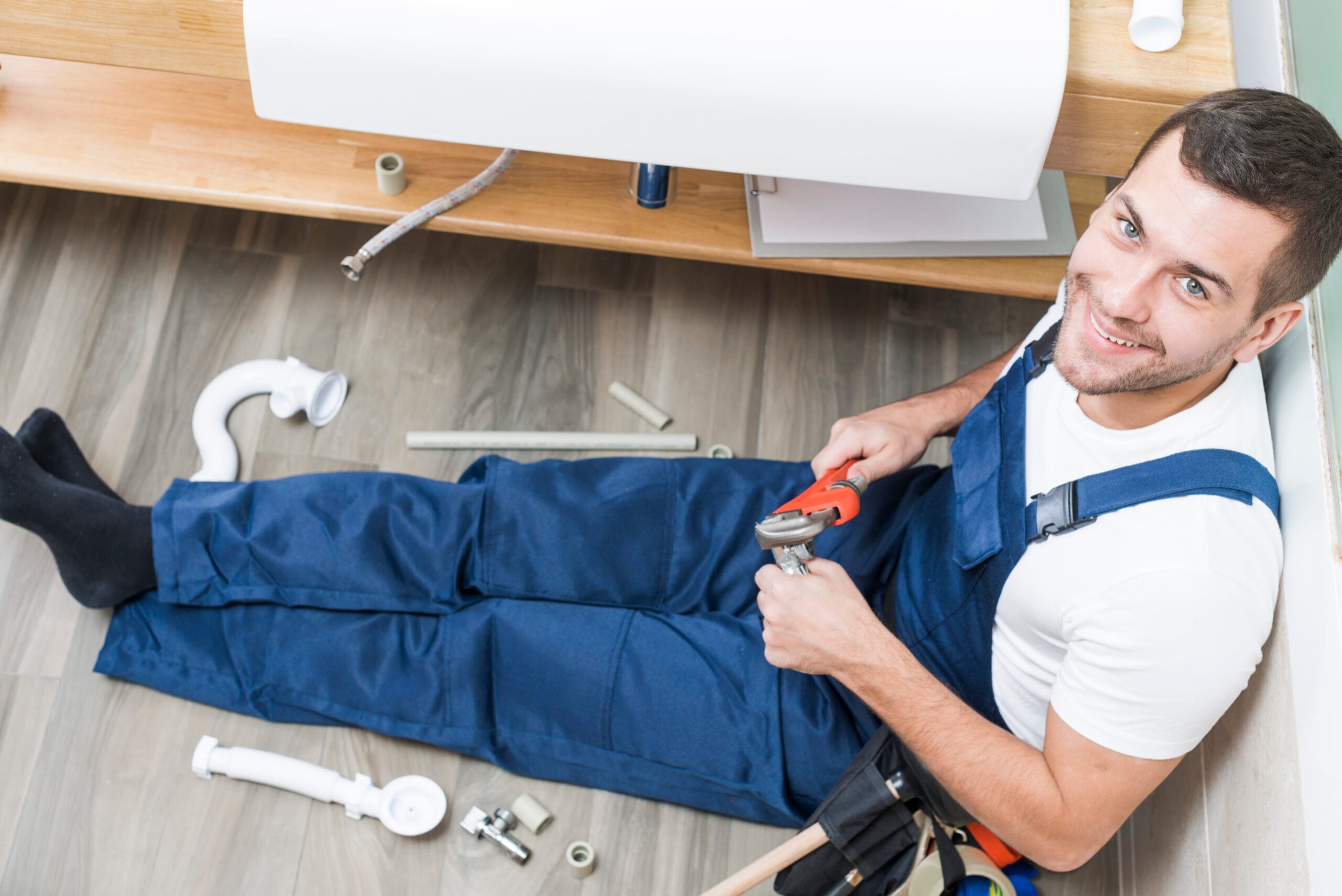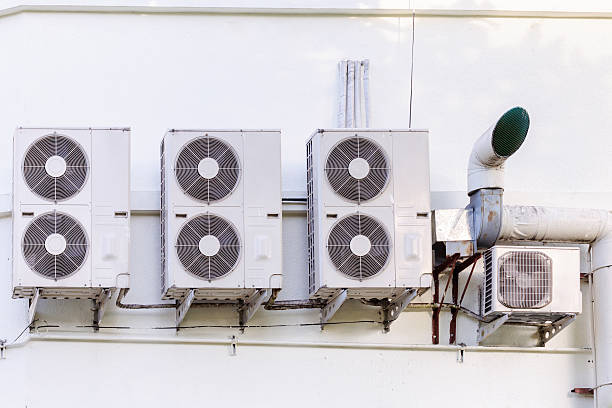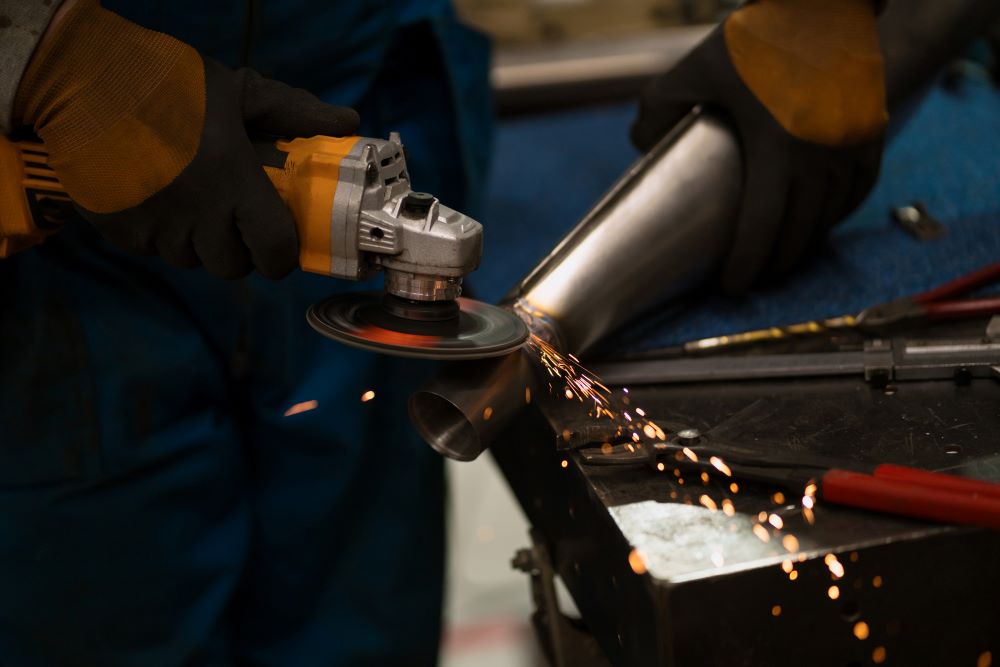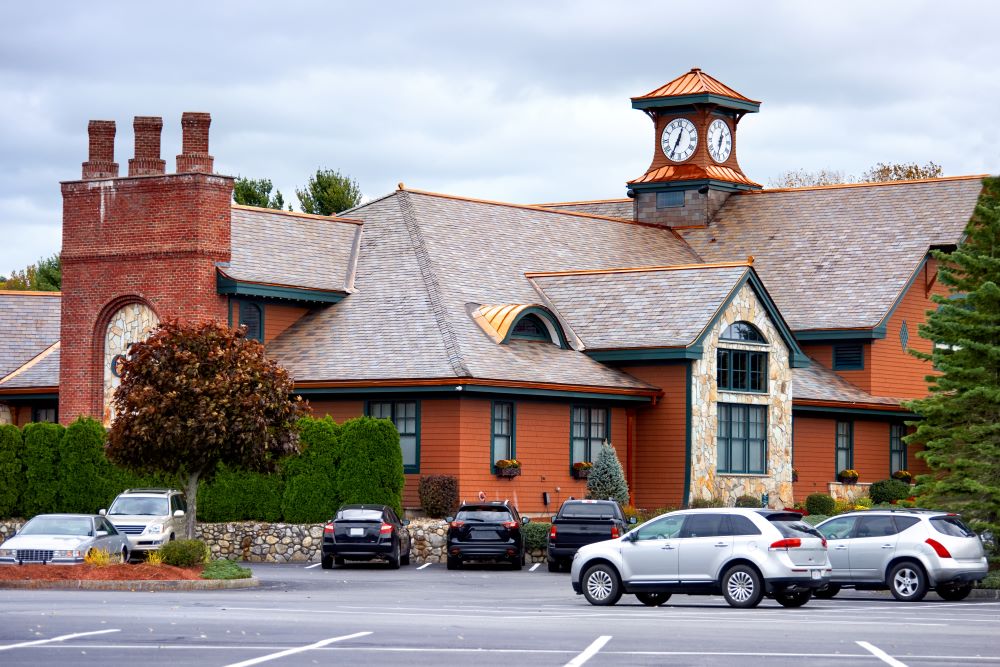Are you tired of scrubbing and scraping your frying pan after every meal? Look no further. In this ultimate guide, we will help you choose the perfect nonstick frying pan that will revolutionize your cooking experience. With the right pan in your kitchen, you can prepare delicious recipes with ease and say goodbye to the hassle of stuck-on food.
When it comes to selecting the ideal nonstick frying pan, there are a few key factors to consider. We will explore the different types of nonstick coatings available, as well as their durability, heat conductivity, and overall performance. Whether you’re a professional chef or a cooking enthusiast, our comprehensive guide will provide you with the knowledge to make an informed decision.
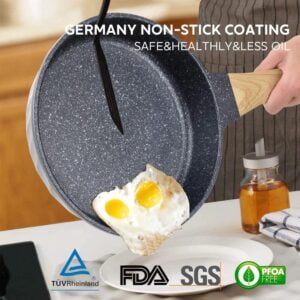
Our experts have meticulously researched and tested various nonstick frying pans to bring you the most reliable recommendations. We will also debunk common myths and misconceptions surrounding nonstick cookware, ensuring that you have accurate information before making your purchase.
Don’t let sticky food ruin your culinary adventures. Get ready to cook effortlessly with a nonstick frying pan that meets all your needs. Let’s dive into the ultimate guide and find your perfect cooking companion.
Advantages of Using a Nonstick Frying Pan
Nonstick frying pans offer a range of benefits that make them an indispensable tool in any well-equipped kitchen. One of the primary advantages is the effortless food release they provide. With a high-quality nonstick coating, your food slides off the surface with ease, eliminating the frustration of scrubbing and scraping stuck-on food. This not only saves you time and effort during the cleaning process but also helps preserve the integrity of your cookware, extending its lifespan.
Another significant advantage of using a nonstick frying pan is the reduced need for added fats or oils. The slick surface allows you to cook with minimal or no added fat, making your meals healthier and more calorie-conscious. This is particularly beneficial for those who are conscious about their dietary choices or are trying to maintain a balanced lifestyle. The nonstick properties also make it easier to monitor the cooking process, as you can easily flip and turn your food without the risk of it sticking to the pan.
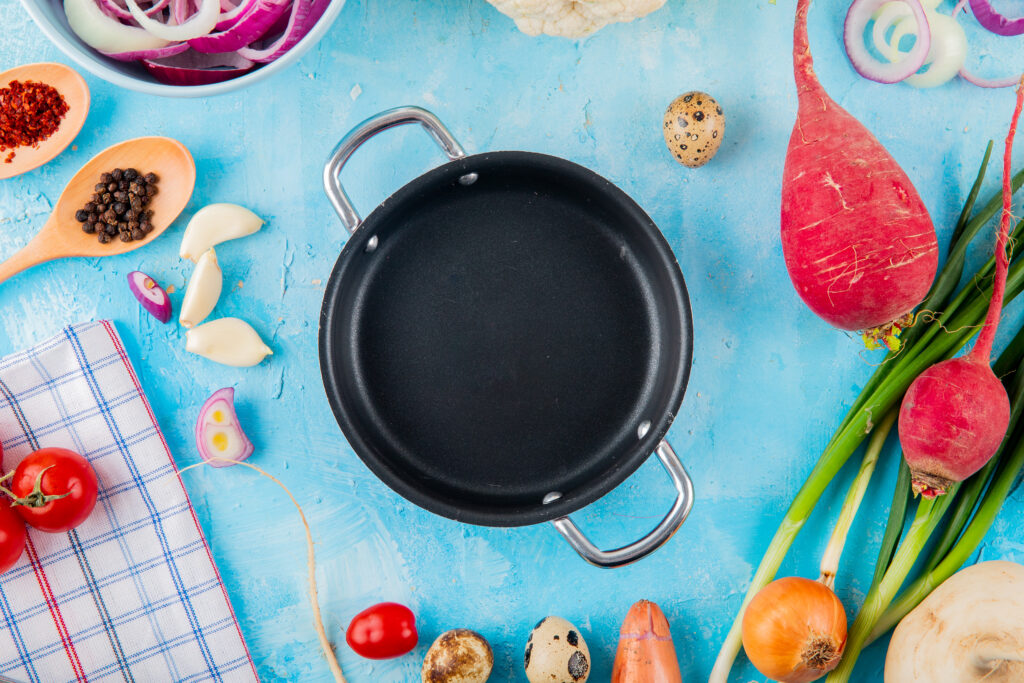
Nonstick frying pans also excel in their versatility. They are suitable for a wide range of cooking tasks, from searing delicate fish fillets to frying up fluffy pancakes. The smooth surface ensures even heat distribution, allowing for consistent and predictable results every time. Whether you’re whipping up a quick weeknight stir-fry or preparing an elaborate gourmet dish, a nonstick frying pan can handle it all with ease. With its user-friendly design and efficient performance, it’s no wonder that nonstick cookware has become a staple in modern kitchens around the world.
Different Types of Nonstick Coatings
When it comes to nonstick frying pans, there are several types of nonstick coatings to choose from, each with its own unique characteristics and benefits. Understanding the differences between these coatings can help you make an informed decision and select the one that best suits your cooking needs.
One of the most common nonstick coatings is PTFE, also known as Teflon. This synthetic polymer coating has been a go-to choice for decades due to its exceptional nonstick properties and easy food release. PTFE-coated pans are generally affordable and offer reliable nonstick performance, making them a popular option for home cooks. However, it’s important to note that PTFE coatings can be susceptible to scratches and may not withstand high heat as well as some other coatings.
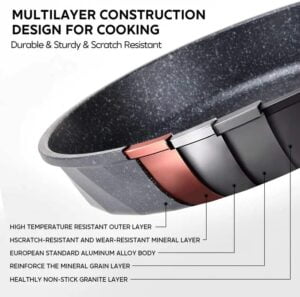
Another type of nonstick coating is ceramic, which has gained popularity in recent years. Ceramic nonstick coatings are made from a combination of natural minerals and are often touted as a healthier alternative to PTFE-based coatings. These coatings are typically more durable and can withstand higher temperatures, making them suitable for a wider range of cooking tasks. Ceramic nonstick pans are also generally easier to clean and maintain, as they are less prone to staining and discoloration.
In addition to PTFE and ceramic, there are also hybrid nonstick coatings that combine the benefits of both. These coatings often feature a PTFE-based foundation with a ceramic-like top layer, offering the best of both worlds in terms of nonstick performance and durability. Hybrid coatings can provide a smooth, long-lasting nonstick surface that can handle high heat and resist scratches and wear.
Factors to Consider When Choosing a Nonstick Frying Pan
When selecting the perfect nonstick frying pan for your kitchen, there are several key factors to consider to ensure you make an informed decision. From the type of nonstick coating to the overall construction and design, each aspect plays a crucial role in the pan’s performance and longevity.
One of the primary factors to consider is the type of nonstick coating, as discussed in the previous section. Whether you opt for PTFE, ceramic, or a hybrid coating, it’s essential to research the pros and cons of each and determine which best aligns with your cooking needs and preferences. Consider the pan’s heat resistance, scratch resistance, and overall durability to ensure it can withstand the demands of your kitchen.
Another important factor to consider is the pan’s material and construction. High-quality nonstick frying pans are often made from heavy-duty, durable materials such as anodized aluminum or stainless steel. These materials not only provide superior heat conductivity for even cooking but also contribute to the pan’s overall longevity. Look for pans with a sturdy, well-balanced design that feels comfortable in your hand and offers a secure grip.
The size and shape of the nonstick frying pan are also crucial factors to consider. Determine the typical size of the dishes you’ll be preparing and choose a pan that can accommodate your needs. A larger pan may be more versatile, but a smaller one may be better suited for certain tasks, such as searing or cooking for a smaller household. Additionally, consider the pan’s depth and sloped sides, as these can impact the ease of food release and the ability to perform tasks like flipping and tossing.
Size and Weight Considerations
When selecting a nonstick frying pan, the size and weight of the pan are important factors to consider, as they can greatly impact the overall user experience and the types of dishes you can prepare.
The size of the nonstick frying pan is crucial, as it will determine the amount of food you can cook at one time. If you frequently cook for a large family or entertain guests, a larger pan, such as a 12-inch or 14-inch model, maybe the better choice. These larger pans provide ample surface area, allowing you to cook multiple servings simultaneously and reducing the need for multiple batches. On the other hand, if you typically cook for one or two people, a smaller 8-inch or 10-inch pan may be more suitable, as it will be easier to maneuver and store.
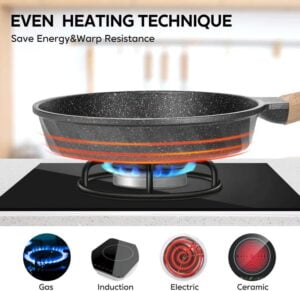
In addition to the pan’s diameter, the depth of the pan is also worth considering. Shallow pans are ideal for tasks like searing, while deeper pans are better suited for dishes that require more volume, such as stir-fries or sauces. The depth of the pan can also impact the ease of food release and the ability to toss or flip ingredients during the cooking process.
The weight of the nonstick frying pan is another important factor to consider. Heavier pans, typically made from materials like cast iron or heavy-duty aluminum, offer superior heat retention and distribution, resulting in more consistent cooking. However, these heavier pans may be more challenging to lift and maneuver, especially for those with limited strength or dexterity. Lighter pans, often made from thin aluminum or stainless steel, can be easier to handle but may not provide the same level of heat performance. Finding the right balance between weight and cooking performance is key to selecting the perfect nonstick frying pan for your needs.
Compatible Cooktops and Heat Resistance
When choosing a nonstick frying pan, it’s crucial to consider the compatibility with your cooktop and the pan’s ability to withstand high heat. Different types of cooktops, such as gas, electric, induction, or even glass-ceramic, have varying heating requirements and may interact differently with certain cookware materials.
For gas and electric cooktops, most nonstick frying pans will work well, as they are designed to be compatible with these common heating sources. However, when it comes to induction cooktops, you’ll need to ensure that the pan is made from a ferromagnetic material, such as stainless steel or cast iron, to ensure proper heat transfer and cooking performance. Nonstick pans with an aluminum or copper core may not be as effective on induction cooktops, as they lack the necessary magnetic properties.
In addition to cooktop compatibility, the pan’s heat resistance is another important factor to consider. Nonstick coatings can vary in their ability to withstand high temperatures, and exposing them to excessive heat can lead to premature deterioration or even the release of potentially harmful fumes. Look for pans with a maximum heat rating of at least 400°F (200°C) to ensure they can handle the demands of searing, sautéing, and other high-heat cooking techniques.
Some nonstick pans are even oven-safe, allowing you to seamlessly transition from the stovetop to the oven for tasks like baking or broiling. If you plan to use your nonstick frying pan in the oven, make sure to check the manufacturer’s recommendations for the maximum oven-safe temperature. By considering both cooktop compatibility and heat resistance, you can ensure that your nonstick frying pan can withstand the demands of your cooking style and provide consistent, reliable performance.
Durability and Lifespan of a Nonstick Frying Pan
The durability and lifespan of a nonstick frying pan are crucial factors to consider when making a purchase, as they directly impact the long-term value and performance of your investment. Nonstick cookware is often perceived as a more delicate and short-lived option compared to traditional stainless steel or cast iron pans, but with the right care and maintenance, a high-quality nonstick pan can provide years of reliable service.
One of the primary determinants of a nonstick pan’s durability is the quality and composition of the nonstick coating. As discussed earlier, PTFE-based (Teflon) coatings are generally more susceptible to scratches and wear over time, while ceramic and hybrid coatings tend to be more durable and resistant to degradation. When evaluating nonstick pans, look for those with a thicker, more robust coating that is less likely to peel, chip, or become compromised with regular use.
The overall construction and materials of the pan also play a significant role in its longevity. Pans made from heavy-duty, scratch-resistant materials like anodized aluminum or stainless steel are less prone to warping, denting, or becoming misshapen over time. These sturdy, well-designed pans can withstand the rigors of daily use and maintain their shape and performance for years to come.
Proper care and maintenance are also crucial for maximizing the lifespan of a nonstick frying pan. Avoid using metal utensils, which can scratch the delicate coating, and instead opt for silicone, wood, or plastic tools. Proper cleaning techniques, such as hand-washing and avoiding abrasive scouring pads, can also help preserve the nonstick properties and prevent premature wear. By following the manufacturer’s recommendations for care and use, you can ensure that your nonstick frying pan remains a reliable and long-lasting addition to your kitchen.
Maintenance and Care Tips for Nonstick Frying Pans
Maintaining and caring for your nonstick frying pan is essential to preserving its performance and extending its lifespan. Proper care and attention can ensure that your nonstick pan continues to deliver effortless food release and easy cleanup for years to come.
One of the most important maintenance tips for nonstick frying pans is to avoid using metal utensils. The sharp edges and abrasive nature of metal can easily scratch and compromise the delicate nonstick coating, diminishing its effectiveness over time. Instead, opt for silicone, wooden, or plastic utensils that are designed to be gentle on the pan’s surface. Avoid cutting or slicing directly on the pan’s surface, as this can also lead to scratches and damage.
When it comes to cleaning, it’s best to hand-wash your nonstick frying pan with a mild detergent and a soft sponge or cloth. Avoid using abrasive scouring pads or harsh cleaning agents, as these can wear down the nonstick coating. If you encounter stubborn food residue, try soaking the pan in warm, soapy water for a few minutes before gently scrubbing. Dry the pan thoroughly with a soft cloth or paper towel to prevent water spots or residue.
Another important maintenance tip is to avoid high heat when cooking with your nonstick pan. Exposing the pan to excessive temperatures can cause the nonstick coating to deteriorate prematurely. Instead, use medium or low heat settings, and allow the pan to gradually warm up before adding your ingredients. This gentle heating approach will help preserve the integrity of the nonstick surface and extend the pan’s overall lifespan.
Recommended Nonstick Frying Pan Brands and Models
When it comes to finding the perfect nonstick frying pan, there are several reputable brands and models that consistently receive high praise from both professional chefs and home cooks. These recommendations take into account the key factors we’ve discussed, such as nonstick coating quality, durability, heat performance, and overall user experience.
One standout brand in the nonstick cookware market is Calphalon. Their Calphalon Premier Hard-Anodized Nonstick Frying Pan is a popular choice, featuring a PFOA-free, multilayer nonstick coating that provides exceptional food release and scratch resistance. The hard-anodized aluminum construction ensures even heat distribution, while the comfortable, ergonomic handle offers a secure grip. This pan is oven-safe up to 400°F, making it a versatile option for a wide range of cooking tasks.
Another highly recommended brand is All-Clad, known for its exceptional quality and performance. The All-Clad HA1 Hard Anodized Nonstick Frying Pan is a standout choice, boasting a durable, PFOA-free nonstick coating and a heavy-duty, warp-resistant construction. This pan is compatible with all cooktops, including induction, and is oven-safe up to 500°F, providing unparalleled versatility. The flared sides and sloped design make it easy to toss and flip ingredients with confidence.
For those seeking a more budget-friendly option, the Cuisinart Nonstick Hard-Anodized Frying Pan is an excellent choice. This pan features a long-lasting, PFOA-free nonstick coating and a sturdy, hard-anodized aluminum body. It’s oven-safe up to 400°F and offers a comfortable, cool-grip handle for easy handling. Despite its affordable price point, the Cuisinart frying pan delivers reliable performance and durability, making it a great value-for-money option.
Conclusion
In the quest for effortless cooking, the perfect nonstick frying pan can be a game-changer in your kitchen. By considering the various types of nonstick coatings, the importance of size and weight, compatibility with your cooktop, and the pan’s durability and lifespan, you can make an informed decision and select a nonstick frying pan that will revolutionize your culinary experiences.
Whether you opt for a PTFE-based, ceramic, or hybrid nonstick coating, ensure that the pan is constructed from high-quality materials and designed with user-friendly features. Pay attention to the pan’s heat resistance, as this will determine its suitability for a wide range of cooking tasks, from delicate searing to high-heat sautéing.
Proper maintenance and care are also crucial for preserving the nonstick properties and extending the lifespan of your frying pan. By following the recommended tips, such as using gentle utensils and hand-washing the pan, you can ensure that your investment remains a reliable and long-lasting addition to your kitchen arsenal.
With the right nonstick frying pan in your possession, you can bid farewell to the frustration of stuck-on food and enjoy the effortless cooking experience you deserve. Embrace the convenience and versatility of a high-quality nonstick pan, and let it revolutionize your culinary journey.






